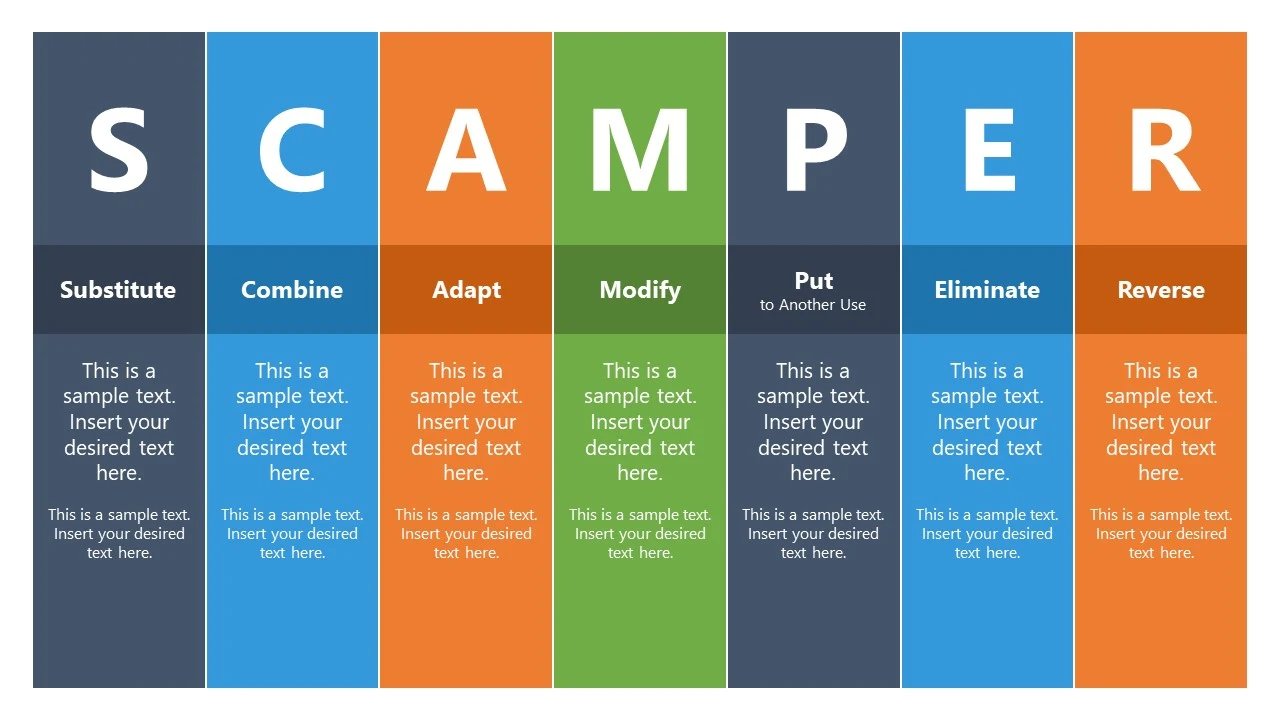Using advanced brainstorming techniques with ChatGPT can significantly enhance your ideation process, allowing for more creative and comprehensive outcomes. By leveraging the power of this AI language model, you can explore a wide range of ideas, solutions, and concepts. Below are some effective methods to maximize your brainstorming sessions with ChatGPT:
Key Takeaways
- Define clear objectives for your brainstorming session to guide the conversation with ChatGPT.
- Use open-ended questions to encourage the generation of diverse and innovative ideas.
- Employ the SCAMPER technique by asking ChatGPT to Substitute, Combine, Adapt, Modify, Put to another use, Eliminate, or Reverse ideas.
- Implement the “5 Whys” method to delve deeper into each idea, asking ChatGPT to explain the reasoning behind suggestions.
- Challenge assumptions by asking ChatGPT to consider alternative perspectives or counterintuitive approaches.
- Request ChatGPT to generate a SWOT analysis (Strengths, Weaknesses, Opportunities, Threats) for each idea to evaluate its viability.
- Encourage random stimuli by asking ChatGPT to introduce an unrelated concept to spark new connections.
- Conduct a role-playing session where ChatGPT assumes the perspective of different stakeholders or experts.
- Use mind mapping by asking ChatGPT to help you create a visual map of ideas and how they interconnect.
- Review and refine the generated ideas by asking ChatGPT to summarize and prioritize them based on predefined criteria.
Creative Brainstorming Techniques Using AI
Imagine you’re sitting at your desk, the clock ticking away, and you’re feeling the pressure to come up with a brilliant idea. You’ve tried the usual brainstorming methods, but they just aren’t cutting it. It’s time to elevate your approach and dive into advanced brainstorming techniques that can unleash your creative genius. These methods are designed to push the boundaries of your thinking and help you generate ideas that are both innovative and actionable.
One powerful technique you should consider is the SCAMPER method. This approach encourages you to think about your problem or idea through seven different lenses: Substitute, Combine, Adapt, Modify, Put to another use, Eliminate, and Reverse. By asking questions within these categories, you can explore a multitude of angles and uncover solutions that might have been invisible before. For instance, asking “What can I substitute to lower costs?” or “How can I adapt this to serve a new market?” can open up a world of possibilities. Another technique to add to your arsenal is Mind Mapping. This visual tool allows you to represent ideas and concepts in a graphical manner, starting with a central idea and branching out into related topics and subtopics. It’s a non-linear way of thinking that can help you see connections between seemingly unrelated ideas and can be particularly useful when you’re feeling stuck or when you’re dealing with complex information.
Another technique to add to your arsenal is Mind Mapping. This visual tool allows you to represent ideas and concepts in a graphical manner, starting with a central idea and branching out into related topics and subtopics. It’s a non-linear way of thinking that can help you see connections between seemingly unrelated ideas and can be particularly useful when you’re feeling stuck or when you’re dealing with complex information.
Don’t underestimate the power of Reverse Thinking as well. Instead of following the typical thought process, flip it on its head. Challenge the status quo by asking “What if we did the exact opposite?” This can lead to counterintuitive insights that break you out of conventional patterns and propel you towards groundbreaking ideas.
Remember, the key to successful brainstorming is not just the quantity of ideas, but the quality and diversity of the thoughts you generate. By incorporating these advanced techniques into your brainstorming sessions, you can enhance your creativity and develop solutions that truly stand out. So go ahead, give them a try and watch as your ideas transform from ordinary to extraordinary.
Here are some other articles you may find of interest on the subject of brainstorming using large language models and AI :
Benefits of Brainstorming With ChatGPT
Firstly, you’ll experience a significant boost in productivity. ChatGPT can generate ideas at a lightning-fast pace, providing you with a wealth of options to explore. This means you can cover more ground in less time, ensuring that no stone is left unturned in your quest for innovation. Moreover, the integration of advanced brainstorming techniques ensures that the ideas you generate are not just numerous, but also diverse and high-quality.
Another key advantage is the enhancement of collaborative brainstorming. ChatGPT acts as a neutral participant that can stimulate discussion, offer unbiased input, and prevent groupthink. This leads to a more inclusive environment where all voices are heard and considered. The result? A richer tapestry of ideas woven from the collective intelligence of your team.
Here are some of the ways you can leverage advanced brainstorming techniques with ChatGPT:
- SCAMPER Method: Use ChatGPT to apply the SCAMPER technique (Substitute, Combine, Adapt, Modify, Put to another use, Eliminate, Reverse) to existing ideas and generate novel solutions.
- Mind Mapping: Collaborate with ChatGPT to create expansive mind maps that visually outline the relationships between different concepts and ideas.
- Six Thinking Hats: Engage ChatGPT in role-playing different perspectives based on de Bono’s Six Thinking Hats, fostering a well-rounded exploration of possibilities.
By harnessing the capabilities of ChatGPT in conjunction with advanced brainstorming techniques, you’re not just improving the quantity of ideas; you’re elevating their quality. You’re breaking free from conventional thought patterns and embarking on a journey of endless creativity. So, take the leap and transform the way you brainstorm. The future of innovation awaits.
Advanced Brainstorming Techniques
- Reverse Brainstorming: Start by asking ChatGPT to consider the opposite of what you want to achieve. For example, if you’re trying to improve customer satisfaction, ask “How might we make the customer experience worse?” This reverse questioning can lead to creative insights on how to achieve the actual goal.
- Starbursting: Use ChatGPT to explore the who, what, where, when, why, and how of your idea or challenge. Ask it to generate questions about each aspect, which can help you understand and expand on different facets of your topic.
- SCAMPER: Guide ChatGPT through SCAMPER prompts: Substitute, Combine, Adapt, Modify, Put to another use, Eliminate, and Reverse. Ask it to apply each verb to your problem or idea to uncover new approaches.
- Mind Mapping: Request ChatGPT to help you create a mind map. Start with a central idea and ask it to branch out into related topics, subtopics, and details. This can help you visualize connections and expand on your initial thoughts.
- Gap Filling: Identify where you are now and where you want to be. Ask ChatGPT to brainstorm what’s missing between these two points, effectively filling the ‘gap’ with ideas and strategies.
- Role Storming: Propose to ChatGPT that it takes on a specific role or persona. Ask it to generate ideas from the perspective of that role, which can lead to unexpected and innovative solutions.
- SWOT Analysis: Engage ChatGPT in a SWOT analysis by asking it to list Strengths, Weaknesses, Opportunities, and Threats related to your idea or challenge. This can provide a comprehensive view of the situation and spark new ideas.
- Six Thinking Hats: Direct ChatGPT to think according to De Bono’s Six Thinking Hats: White (facts), Red (emotions), Black (judgment), Yellow (positivity), Green (creativity), and Blue (process). Ask it to generate ideas while wearing each ‘hat’ to cover different perspectives.
- Forced Connections: Give ChatGPT two unrelated concepts and ask it to make connections between them. This technique can lead to novel ideas by forcing you to think outside the box.
- Challenge Assumptions: List common assumptions about your topic and ask ChatGPT to challenge them. This can help break through conventional thinking and inspire innovative ideas.
Improving Your Responses
When you’re trying to harness the power of ChatGPT for advanced brainstorming, you might encounter some issues. Here’s how you can troubleshoot these problems effectively:
First, ensure that your prompts are clear and specific. Vague prompts can lead to equally vague responses, which won’t be helpful for your brainstorming session. For example, instead of saying “give me ideas,” try “provide me with innovative marketing strategies for a tech startup.”
If you’re not getting the desired results, consider refining your prompts. This could mean breaking down your request into smaller, more manageable questions. By doing so, you can guide ChatGPT to generate more focused and relevant ideas.
- Check your internet connection to ensure that there are no connectivity issues that might be affecting your interaction with ChatGPT.
- Review the input you’ve provided to ChatGPT for any typos or errors that could be leading to misunderstandings.
- Experiment with different phrasings of your request to see if certain wordings yield better results.
- Use follow-up questions to narrow down the scope of the brainstorming session, which can help ChatGPT to provide more targeted ideas.
- Consider the use of keywords that are relevant to your industry or topic to help ChatGPT understand the context better.
Remember to be patient and iterative in your approach. Sometimes, it takes a few tries to get the creative juices flowing, even for an AI like ChatGPT. Keep tweaking your strategy until you find the sweet spot for your brainstorming needs.
Prompt Writing Brainstorming Tips & Tricks
When you’re looking to unlock the full potential of brainstorming with ChatGPT, it’s essential to employ some advanced techniques. Here are a few tips and tricks to help you make the most out of your creative sessions:
- Define Your Goals: Before you start, be clear about what you want to achieve. A focused question or topic will guide ChatGPT in generating more relevant and targeted ideas.
- Use Open-Ended Prompts: Encourage a wide range of responses by asking open-ended questions. This allows ChatGPT to explore various angles and perspectives that you might not have considered.
- Embrace Wild Ideas: Don’t dismiss unconventional thoughts. Sometimes the most innovative solutions come from the least expected places. ChatGPT can help you push the boundaries of creativity.
- Build on Ideas: Take the initial ideas generated by ChatGPT and expand on them. Ask follow-up questions to deepen the conversation and uncover more detailed insights.
- Use Role Play: Pretend that ChatGPT is a specific expert or character to gain new viewpoints. This technique can lead to a richer brainstorming experience.
- Iterate Quickly: Don’t be afraid to refine and revisit ideas. Iteration can help you polish rough concepts into actionable solutions.
Remember, the key to successful brainstorming with ChatGPT is to maintain an open mind and be willing to explore a multitude of possibilities. Let your creativity flow and watch as ChatGPT helps you navigate the path to innovation.
As you step away from this exploration of advanced brainstorming techniques with ChatGPT, remember that the key to unlocking your creative potential lies in leveraging the power of AI as a collaborative partner. By using prompt engineering, iterative refinement, and divergent thinking, you have the tools to expand your ideation process beyond conventional boundaries.
Embrace the combination of human intuition and AI efficiency to elevate your brainstorming sessions. Whether you’re tackling complex problems or seeking innovative solutions, remember that ChatGPT is more than just a tool; it’s a gateway to a vast landscape of possibilities.
Filed Under: Guides
Latest TechMehow Deals
Disclosure: Some of our articles include affiliate links. If you buy something through one of these links, TechMehow may earn an affiliate commission. Learn about our Disclosure Policy.
